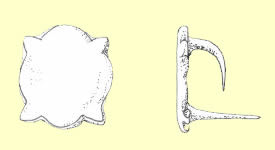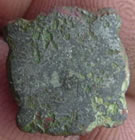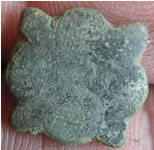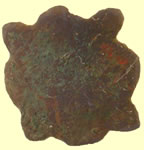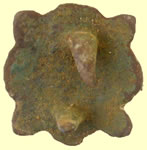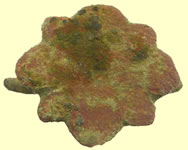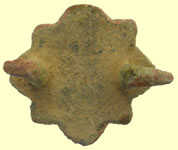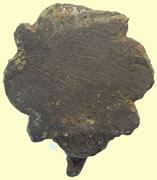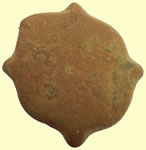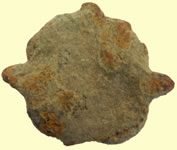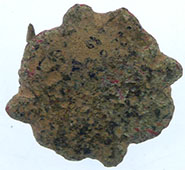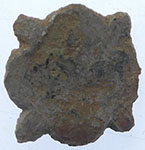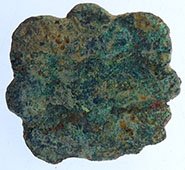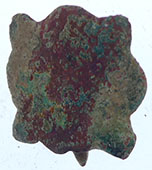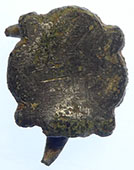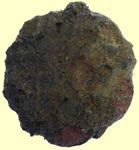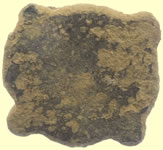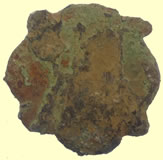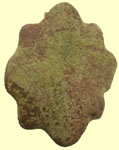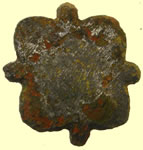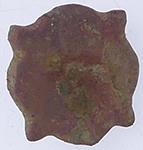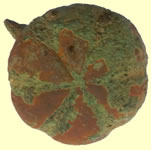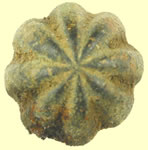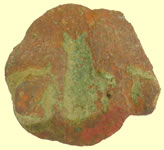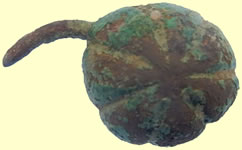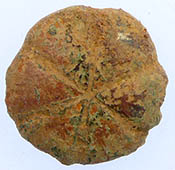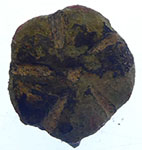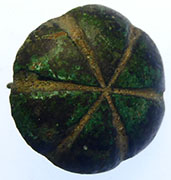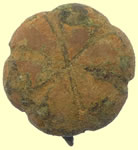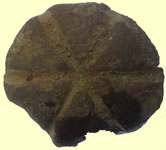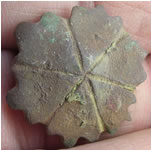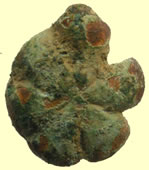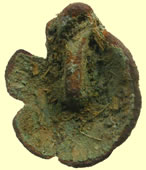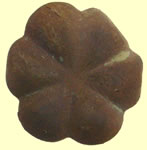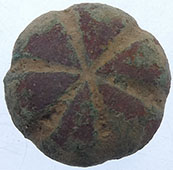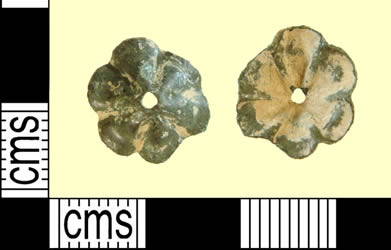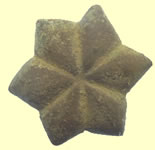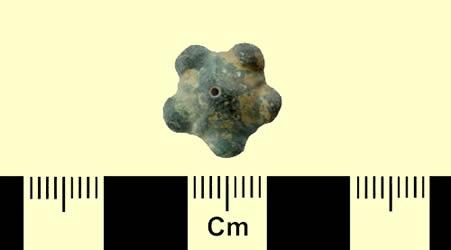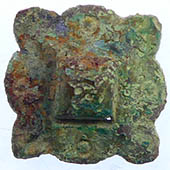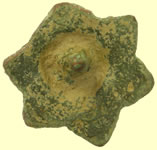

Metal detecting holidays in England with the World's most successful metal detecting club.20 years plus.
Twinned with Midwest Historical Research Society USA.
Quatrefoil, Cinquefoil Sexfoil, Octofoil mounts |
A copper-alloy cast mount. The mount is quatrefoil in shape with a cusp in each angle. The reverse has two attachment lugs. The front of the object has an intricate design which consists of four circles, one in each of the quatrefoils. Each circle has an off centred punched circular depression, giving them a crescentic appearance. Between each crescent and expanding from the central circle, there are a series of small rings, extending towards the outer cusps. Traces of silvering are visible on some of these faces. ChronologyBroad period: POST MEDIEVAL
|
||
  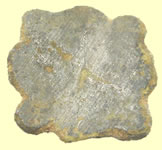 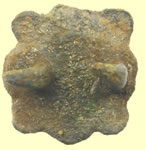 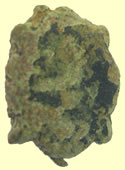  |
||
|
||
Medieval copper alloy gilt domed octofoil mount, with only traces of gilding surviving
ChronologyBroad period: MEDIEVAL |
||
A Late Medieval/ Early Post-Medieval (15th-early 16th century) cast one-piece copper-alloy mount, convex and cinquefoil in shape Broad period: MEDIEVAL Period to: POST MEDIEVAL Date from: AD 1400
|
||
A Medieval (1250-1450) sheet copper alloy (0.50mm thick) domed sexfoil belt mount with a central perforation, 12.84mm in diameter at its base and standing 4.27mm high. It weighs 0.4g. The base of each foil is curved and turns slightly upwards. The central perforation measures 1.26mm in diameter. ChronologyBroad period: MEDIEVAL Date from: AD 1250 Dimensions and weightLength: 4.27 mm Materials and constructionPrimary material: Copper alloy
Quadfoil example
|
||
A copper-alloy sexfoil mount of Medieval date. The mount has been stamped from a piece of sheet-metal. It has six convex petals separated by grooves which cross at the centre. The underside is hollow and there is a possible corroded rivet attachment at the middle. The object is bent and corroded. It measures 16.6mm in diameter, 2.2mm thick and weighs 0.93g. Several examples of sexfoil mounts have been found in excavations in London (see Egan and Pritchard 1991: 186-193). Class: Sexfoil ChronologyBroad period: MEDIEVAL Materials and constructionPrimary material: Copper alloy Manufacture method: Stamped
|
||
Medieval cast copper alloy cinquefoil mount. The mount is domed and has a central rivet hole. It is 13th or 14th century in date. cf Read, 2001 'Metal Artefacts of Antiquity' Fig9, nos.107 and 109 ChronologyBroad period: MEDIEVAL Date from: Circa AD 1200 Dimensions and weightQuantity: 1 Materials and constructionPrimary material: Copper alloy Manufacture method: Cast Completeness: Complete
|
||
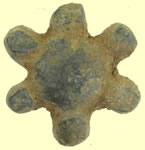 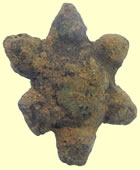 |
||
Roman cinquefoil mount
A Late Medieval/ Early Post-Medieval (15th-early 16th century) cast one-piece copper-alloy mount, star shaped Broad period: MEDIEVAL Period to: POST MEDIEVAL Date from: AD 1400
Roman mount |
||
|
|
||
